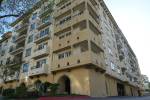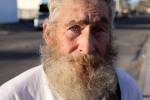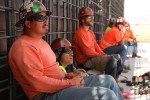RSV – Three letters every new parent should know
(BPT) - Like many parents, Heidi Staats had never heard of respiratory syncytial virus, commonly known as RSV, until she almost lost her son to the common, yet potentially severe disease it can cause.
Heidi’s son, Brett, was born only a month preterm. Despite his early arrival, Brett weighed a hearty seven pounds and was deemed ready for discharge after a few short days. Because of his healthy appearance, doctors didn’t think of Brett as a typical “preemie” and didn’t inform Heidi of the increased risks that impact all preterm infants—even those born just a few weeks early. In fact, even though he was a preemie, Brett wasn’t considered to be at high risk for developing severe RSV disease and Heidi wasn’t aware of the dangers of RSV, particularly for premature infants born during the RSV season (November – March).
RSV usually causes mild to moderate cold-like symptoms but in some infants it can cause a serious lung infection. While the virus affects nearly 100 percent of babies before the age of two, premature babies—defined as those born before 37 weeks gestation—are most at risk for developing severe RSV disease.Preemies are not as well-equipped to fight RSV as full-term babies, because they are born with underdeveloped lungs and a lesser amount of vital antibodies. These antibodies are necessary to stave off infections.
Since Heidi wasn’t aware of the need to take extra precautions, she was not alarmed about Brett being around other children and enrolled him in daycare when he was six weeks old. During his second week, one of the teachers mentioned that another child had RSV, a virus Heidi had never heard of. Heidi noticed that Brett had a little cough, but no fever or sniffles. Erring on the side of caution, Heidi took him to the doctor. At that visit, it was noted that Brett’s lungs sounded clear and strong.
“The next day, January 13, is a day I will always remember,” says Heidi. “I called daycare to check in on Brett and the teachers said he seemed fine, but a bit more lethargic than usual. Within a few hours, however, the teacher noticed that Brett was unresponsive and gray in color and they immediately called 911.”
On the way to the hospital, the paramedics were able to stabilize Brett with an oxygen mask, but shortly after arriving, he stopped breathing again. Doctors had to intubate Brett and transport him via helicopter to a nearby children’s hospital, where he could receive the specialized intensive care needed to save his life.
“I was incredibly confused about what was happening,” says Heidi. “When we arrived at the hospital, I overheard one of the doctors saying the baby just brought in from the daycare had coded. Then, I noticed one of the paramedics had tears in his eyes. I knew this wasn’t a good sign but was in complete denial—how could this be my baby boy, who just yesterday had been deemed healthy?”
Later that night, it was confirmed that severe RSV disease was what had caused Brett to stop breathing. He spent six days on the ventilator in the NICU and two more days at the hospital—slowly regaining his strength.
Severe RSV disease is the leading cause of infant hospitalization in the U.S., and is responsible for 1 of every 13 pediatrician visits and 1 of every 38 trips to the E.R. Additionally, while deaths are not common, severe RSV disease causes up to 10 times as many infant deaths each year as the flu, resulting in up to 400 infant deaths annually in the U.S. In addition to premature infants, other populations at high risk for developing severe RSV disease include children with congenital heart disease and/or chronic lung disease. Risk factors for severe RSV disease include low birth weight (less than 5.5 pounds), young chronological age (≤ 12 weeks of age at the onset of RSV season), and situational risk factors such as attending daycare, crowded living conditions, having pre-school or school-aged siblings, or exposure to tobacco smoke.
Because there is no treatment specific for RSV disease, Heidi wants all parents to know there are simple steps they can take to help protect their baby from the virus. “I want all parents to know about Brett’s story and learn about the dangers of RSV,” says Heidi. “I’m so thankful that Brett is alive and thriving today. All parents should know how they can protect their little ones this winter.”
To help protect your baby from RSV, you should:
* Understand the risk factors and ask your child’s pediatrician if your child may be at increased risk.
* Help prevent the spread of the virus by frequently washing your baby’s hands, toys and bedding, and by keeping your baby away from large crowds, young children and people with colds. Additionally, anyone who touches the baby should wash their hands.
* Carefully monitor your baby’s behavior for signs and symptoms like a severe cough or wheezing; difficulty breathing or rapid, gasping breaths; blue color of the lips, mouth, and/or fingernails; difficulty feeding; fatigue and fever.
“I’ve seen how quickly severe RSV disease can develop, and how devastating it can be to families,” says pediatric critical care physician, Kari Kassir, M.D., of Children’s Hospital of Orange County. “While frequent hand washing is essential in preventing the spread of RSV, it’s also important to talk with your child’s pediatrician to determine if he or she is at high risk during the RSV season.”
Visit www.RSVprotection.com for more information.



















